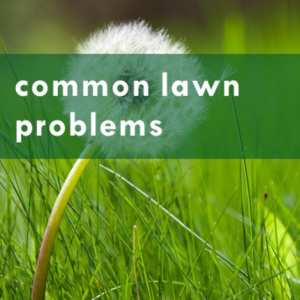Common lawn problems
Moss Control
Mosses reproduce by means of wind-blown spores. Mosses typically form a thick, green mat on the soil surface. They produce their own food and do not kill grass plants but rather fill in the spaces in the lawn where grass is not growing.
If mosses are present in your lawn, it is a symptom that conditions are not favourable for the growth of healthy grass and not the primary cause for a poor lawn. Just using a moss treatment is not enough and the best way to reduce the risk of its return is to establish the causes and correct them.
Moisture is essential for the spread of moss so prolonged periods of wet weather, typical of spring and autumn are the main times of the year when moss rapidly colonises. Other factors such as soil compaction, poor drainage, shady conditions, high thatch levels, mowing too closely and underfeeding also play a part in causing moss.
Solutions
There is no magic cure for moss problems in lawns. The best we can offer is to provide a lawn treatment regime which keeps the moss in abeyance. A moss treatment applied in isolation rarely provides a solution to the problem, and needs to be done in combination with mechanical removal. This is best achieved either by raking-out or by scarifying. Once the bulk of the moss has been removed, we then try to encourage conditions which prevent its return. This is most likely to be achieved by a combination of regular lawn treatments and cultural activities such as aeration (lawn-spiking).
Enquiry form
Please feel free to contact us. lawn partners provide a free, no obligation, evaluation and proposal.




